Shared universes are all the rage in Hollywood these days, but if one looks closely, it is not the MCU that did it first. Several filmmakers have earlier tried to establish cross-film connections and gone to great lengths to ensure connectivity and continuity in properties that proved to be immensely popular, and nothing I say can be testament to the popularity that Toho’s monsters and Kaijus have garnered all over the world, especially Japan before the monster fever took over Hollywood too.
The earliest monster film can be dated to as long back as the 1930s when ‘King Kong’ was first released, and this coupled with the success of ‘The Beast From 20000 Fathoms’ then inspired Toho to do Godzilla in the 1950s that would go on to become its most revered and longest running film series, spanning 35 films over the seven decades that have passed, with the gigantic lizard’s popularity soaring as the years have passed, and new monsters being added to its universe continually expanding on its myth and Eastern roots.
However, let’s get one thing out-of-the-way here, just as we begin. Gigantic monsters easily the size of skyscrapers battling each other with our cities as playgrounds, reducing decades worth of labour into rubble and dust as we humans lay mere spectators, never hurt anyone. Infact, most people want to pay to watch more on-screen mayhem. They even prefer it with a big tub of popcorn.To add to that, some of these films have then even dealt with how humans have impacted the environment despite being such a small part of the ecosystem, and how these monsters are nature’s way of a much-needed purge, adding to what these films really are about, apart from their sheer entertainment value.

Godzilla first received the Hollywood treatment starting with Roland Emmerich’s eponymous film back in 1998 that no one really prefers to talk about, and then again in 2014 when the franchise was rebooted in Gareth Edwards’ ‘Godzilla’, a CGI heavy, slow burn kind of monster experience, with Godzilla at the centre being hailed as a god. To be fairly honest, I didn’t quite dislike the film as much as the audiences around the world, thinking that the beast’s entry well into the second half was rather earned and worth it, with the payoff to the build-up being good enough in my opinion.
However, audiences were surely looking for more monsters and definitely more Godzilla, and the 2019 sequel, ‘Godzilla II: King of the Monsters’ more than take cares of that. Infact, a central plot point of the film involves several monsters, or as they are referred to in the film, Titans, unleashed upon the planet from being awakened from a deep state of hibernation to “restore balance” on the planet. While the scheme is becoming increasingly one-dimensional even for a cliched Hollywood villain, the film does get one thing right: the monster fights, especially the first one in Antarctica between sworn enemies.
The film brings in as many as ten monster titans on-screen while a total of “seventeen and counting” having been discovered by the crypto zoological agency, Monarch. The origins of these titans too, both as benevolent prehistoric godly creatures with their orders defected by malevolent destructive creatures double up on the etymology of the Japanese word Kaiju, simply meaning ‘Strange Beast’, reaffirming on the Japanese legends that give birth to these historic creatures. Even among the ones seen on-screen, as many as four receive significant screen time and origin stories. We bring all those details in one place for you, and the article can be harmlessly read even if you haven’t seen the film yet, simply for building up on some of that Kaiju knowledge. Read on.
Godzilla
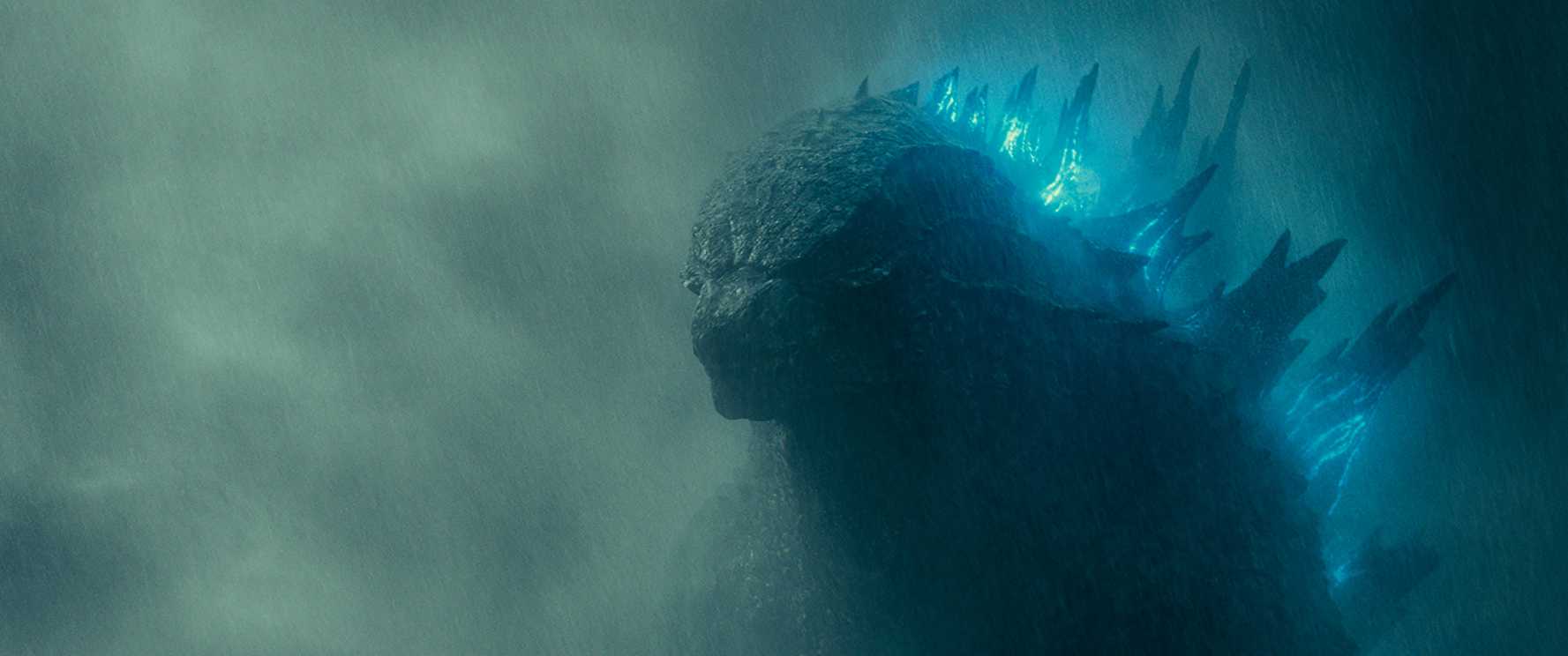
Needless to say, we start off with the star of the show, the king of monsters, Godzilla. Unlike the first film where his appearance wasn’t until the second half of the film and the makers spend considerable time building him up as the showstopper, here he shows up relatively quicker, within the first half an hour or so, jumping straight into battle. Each thump of the monstrously large reptile is still ear shatteringly loud and thunderous, enough to make your seats shake, and if you are watching it in a good Atmos or better still, IMAX with a state of the art sound system, good luck holding on to your ears in the final titanic battle.
Traditionally too, Godzilla has been portrayed as a T-rex like, bipedal creature belonging to history long before humans came along and hailed as a king, usually awoken as a result of nuclear radiation. This origin story has caught on from Ishiro Honda’s first Godzilla film back in 1954 that impinged upon the destructive impacts the nuclear bombings of Hiroshima and Nagasaki had on Japan and its populace. In most media including ones of its origins, Godzilla (or Gojira in Japanese) is typically amphibious, dwelling underwater for extended periods of time, and resurfacing to wreak havoc on the terrestrial world.
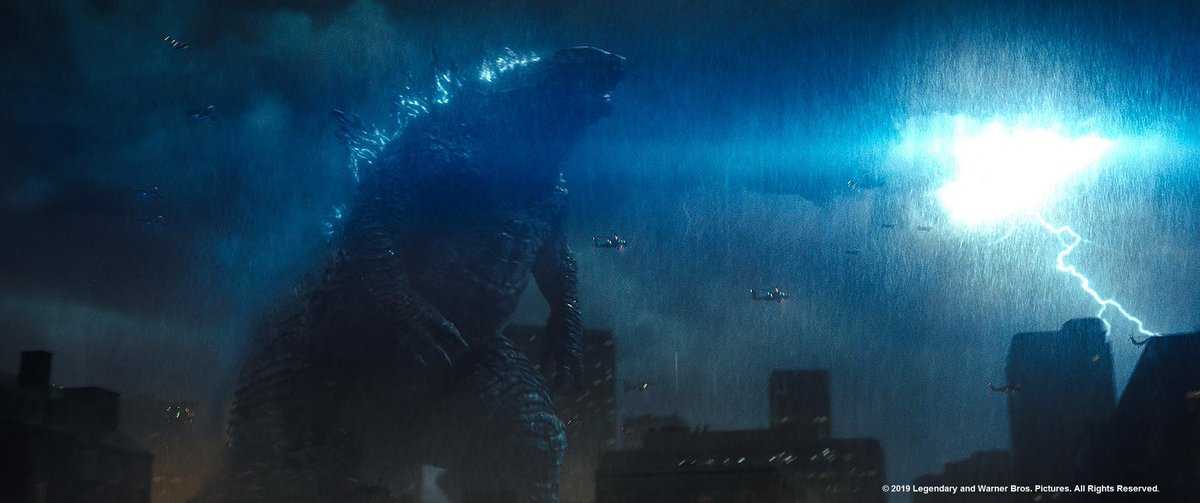
The “apex predator” as this film would call him, top of the order and top of the food chain, Godzilla through all of his reincarnations including previous films has been shown to have a kind of dichotomous relationship with the humans. While most of the times on film,, his role as a “destructive saviour” has been explicitly implied, the very premise of this latest film revolves around this very role. In a segment towards the middle of the film, when Godzilla is naturally replenishing himself after falling in a battle agains Ghidorah, his arch-enemy, the humans infact help him accomplish that through nuclear means, by detonating a nuke next to him, giving him some much-needed radiation enhancements.
Contrarily, the “destructive” part of the term holds true too. His gigantic size would mean that entire city block would be levelled every time he would face an enemy even half his size. To give you an idea of the same, his reawakening in the 2014 film triggered a Tsunami that is clearly shown to kill thousands. To add to his obvious physical characteristics of strength, since Godzilla is powered by nuclear, he has the additional ability to breathe a sort of atomic beam. Even if the science behind it may not be completely sound, I can assure you that it looks badass, even more so in this film. At the end of the film too, Godzilla receives a significant power up that truly establishes him as the king of monsters: he goes full nuclear, and despite imploding, stands on his two feet to claim the title. Still need more affirmation?
Mothra

If Godzilla is hailed as the King of the Monsters, Mothra is the queen. A relationship between the two is also implied in ‘Godzilla II: King of the Monsters’. While rest of the monsters on this list are typically either portrayed as antagonists or anti-heroes, Mothra, who made her cinematic debut in the 1964 Toho film ‘Godzilla vs Mothra’ has always been on the wrong side of the monsters by siding with humanity time and again. Her origin stories are mostly varied, especially the locations where they are staged, but the common thread among those is that she was a goddess worshipped in her time, long before the humans. As the name would obviously unveil, Mothra is a spin on the commonly seen insect Moth, belonging to the same family as butterflies.
Being a goddess though, her life cycle is deemed to be an endless cycle of cocooning and emerging as a gigantic winged creature with the anatomy of a moth, which is also evident from Mothra cocooning and recovering at the end of this film after her battle with Rodan, revealed through news clippings. Mothra’s wings are bioluminescent in nature, and by legend emit beautiful, blinding light in the sky. Another significant difference between her and the other titans is the extent of her powers: while the rest of the titans have their powers rooted in scientific logic or myth, Mothra’s are mostly celestial in nature, like a true goddess queen.
The film doesn’t display any of Mothra’s Shobigin priestesses or fairies, that are also canon to her origin story of being a goddess on the Infant Island in the Pacific Ocean, but escalates her power to a godlike degree, wherein she is able to harness stardust off her wings to revive Godzilla and much more.
Rodan

Rodan in the movie initially appeared as the main villain’s henchman, but in a sweeping segment towards the middle of the film when he is awoken, he proves why the fire titan was called the king of the skies, before finally siding with Godzilla and bowing to him towards the end. While the best monster bits were clearly reserved for Godzilla, Rodan comes in a very close second with his entrance from the Isla De Mara volcano in Mexico being explosive to say the least. He has been said to have the ability to fly at supersonic speeds, and while that is not displayed in the movie, he comes pretty close when he flies over the city to usher in a storm that sweeps entire buildings with it.
Like Godzilla and Mothra before him, even Rodan, considering his size and agile abilities, was worshipped as a god in ancient times and even feared among the other titans. Rodan derives both his name and anatomy from a Pteranodon, commonly mistaken as a dinosaur, which also provides a linkage to his prehistoric roots, choosing habitats of fire. In Isla De Mara too, he emerges from his subterranean refuge with the volcano exploding, while his wings are lined with molten lava. Kudos to the character designers and recreators here: Rodan is pure badass.
The character received his own solo film ‘Rodan’ by Toho in 1956, before joining the expansive Toho monsters universe and fighting both against and alongside Godzilla, although mostly alongside. In fact, unlike the film where the signal from the ORCA awakens him from stasis inside the Isla De Mara Volcano as a malevolent entity hell-bent on destroying the Earth, the Toho films following his origin story had him fighting with Godzilla and being a close aide multiple times, even helping him defeat King Ghidorah on several occasions.
Ghidorah
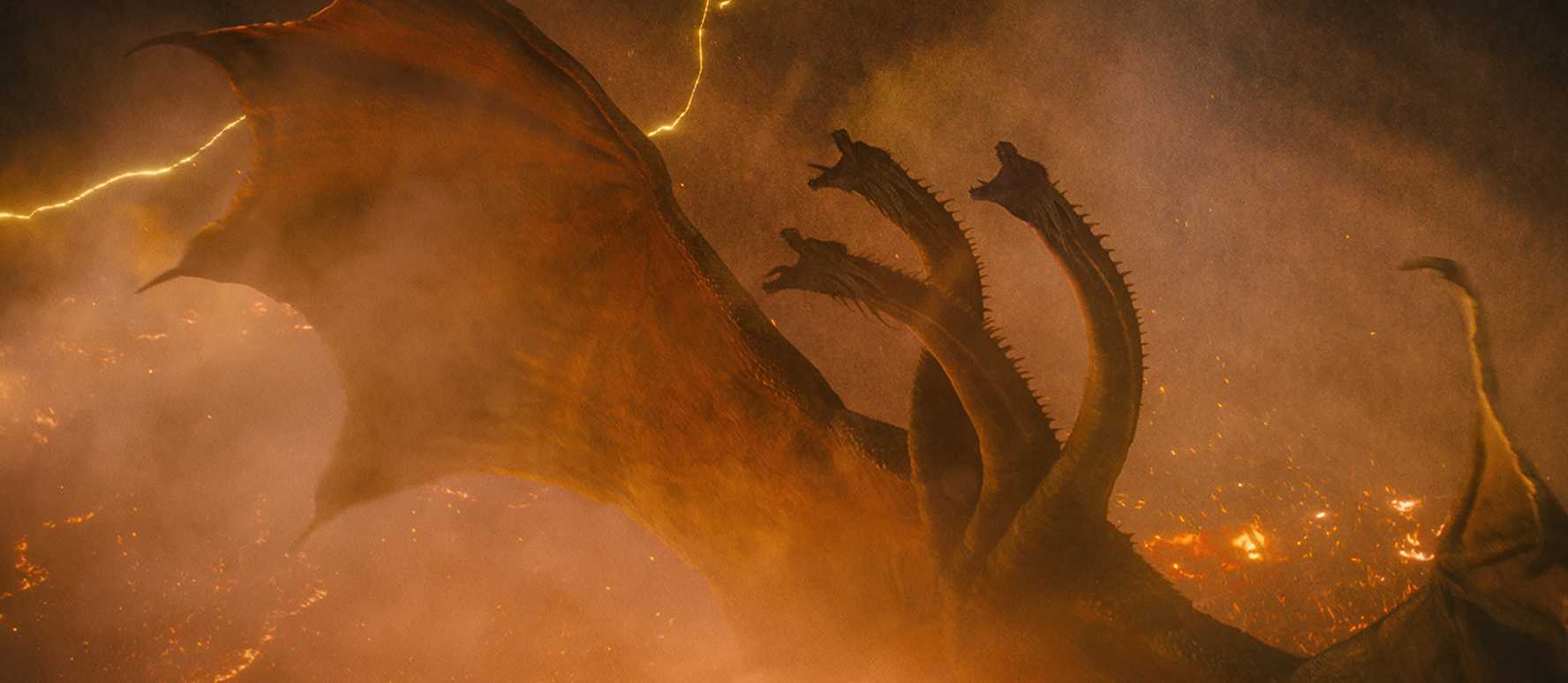
Or should I say King Ghidorah? The three headed monster is a pure antagonist, with no shades of grey and all shades of Black. Ghidorah has been Godzilla’s physical equal, his arch nemesis since ages and has squared off against him multiple times, each time as the main antagonist in all films, despite having received his own solo film ‘Ghidorah: The Three Headed Monster’ from the house of Toho in 1964. He is also the primary antagonist in this year’s ‘Godzilla II: King of the Monsters’ and just as the trailers promised, the titanic battle between the two is absolute bang for your back. His current predicament as trapped in the ice at one of the Monarch stations in Antarctica was perhaps as a result of him being defeated in battle against Godzilla earlier, which is why the two wasted exactly zero seconds in locking horns when they first saw each other.
A worthy foe, a physical equal of Godzilla, and a claimant to the title of ‘King of the Monsters’, Ghidorah has an anatomy that isn’t rightfully akin to anything that could have born on this planet, with three heads each of which seem to have differing personalities and the ability of regeneration, along with two spiked tails. This also doubles up on his most canon origin story of being a planet destroyer from some alien planet where he was terrifyingly birthed as such.
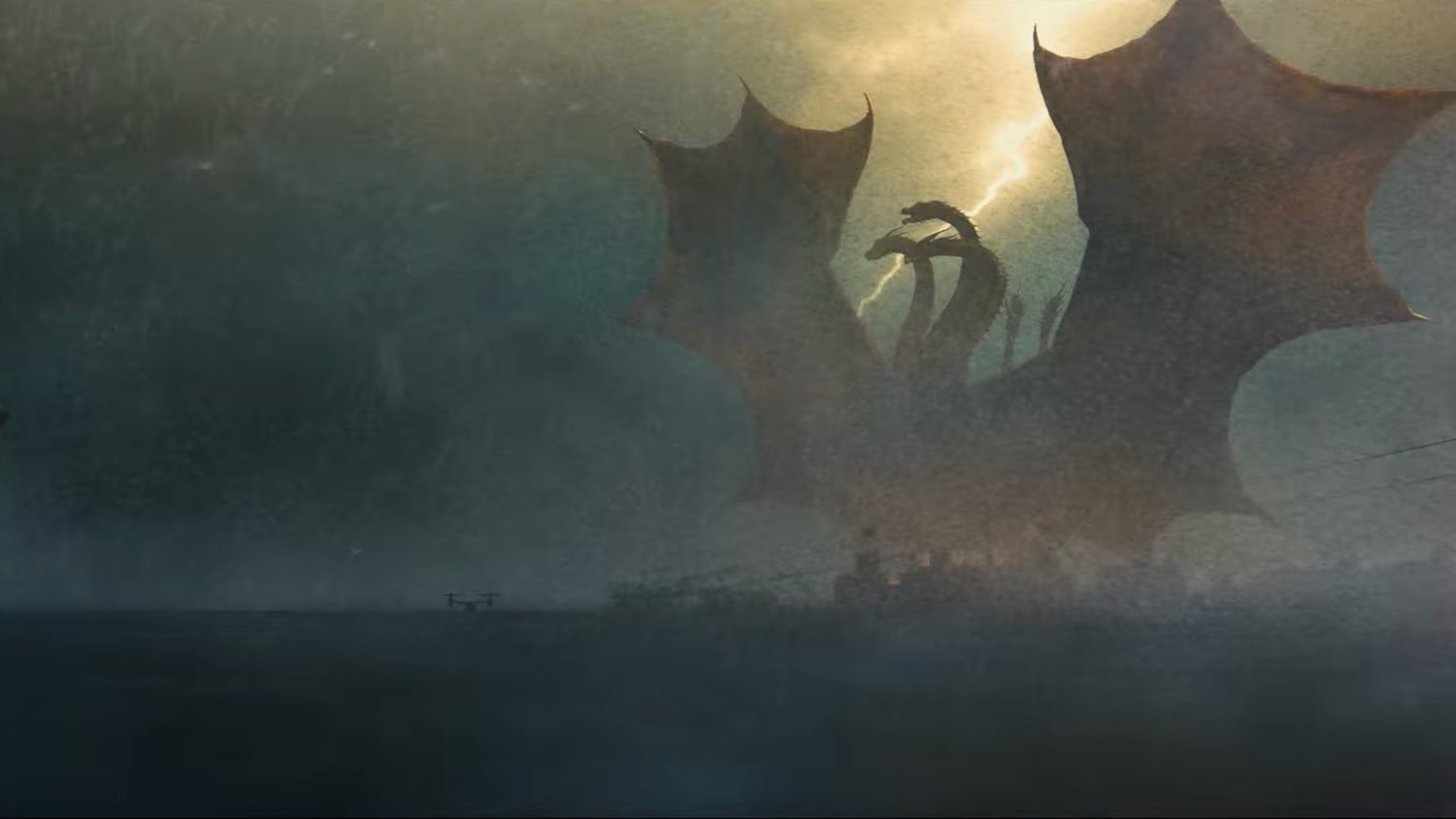
One of the positives of the film is definitely Ghidorah: the CGI on him is flawless and the character design makes him look genuinely evil and terrifying. His golden scales are on point, and with the kind of complex body structure that he has, his sequences of taking flight are also exceedingly well handled. Among his abilities are firing an electric bolt straight from his mouth, ushering in strong storms with his signature yellow lightning by himself, increased resistance with a thick hide, provided he survived the oxygen decimating nuke from the US army, while even Godzilla could not, and the sheer magnanimity of his size being even greater than Godzilla himself.
The film reveals that Ghidorah was scarcely mentioned in the ancient texts about the Kaiju deliberately out of fear, hailed as a false king from another planet. To give you an idea of his powers: he summoned all the beasts that had been in deep hibernation on the planet to his command of destruction while rummaging through a city simply by flying above it. The one shot with a cross in the foreground, and a lightning powered Ghidorah in the background, screeching across the sky as the monsters heed to his call directly establishes him as an almost ant-christian destructive force. Tastefully well done.
Kong
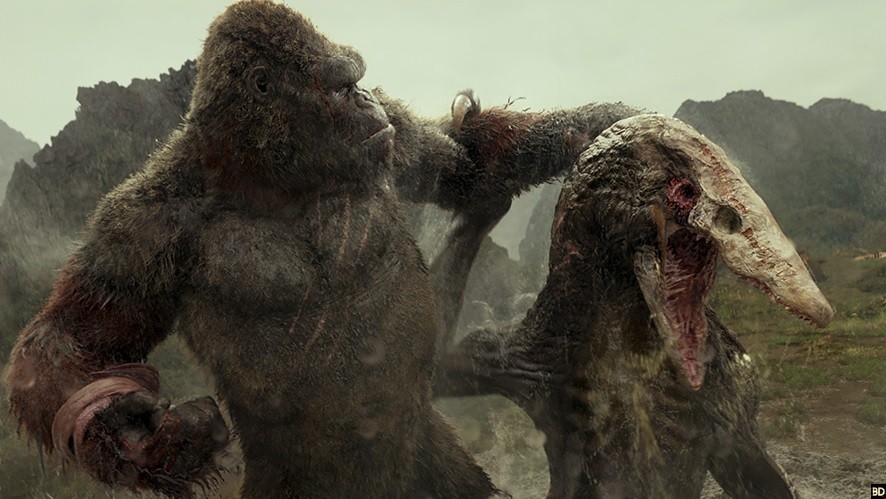
While technically not a monster and not a Toho property, Kong has crossed over with the Japanese universe of monsters multiple times, especially in titanic battles against Godzilla that make for quite a show, dubbed as the battle between a king and a god. The same is the culmination of an overarching story narrative in Legendary’s current monster universe, with Kong all set to battle Godzilla next year in Godzilla vs. Kong, following his big screen introduction into the universe with ‘Kong: Skull Island’, eventhough he doesn’t appear in the film, but Skull Island is explicitly shown in the credits. No points for guessing where Kong’s genealogy lies.
The oversized ape is the king of Skull Island in the Indian Ocean, where he is seen as a god and protector of the native tribes, and unlike Godzilla, has nothing to do with radiation or enhanced abilities like the atomic breath, his might and rage being completely physical and stemming from the sheer size of him. However, on similar counts, like Godzilla, following multiple movie incarnations and appearances, he has come to be seen as more of a tragic antihero who protects humans rather than a rampaging monster. Nonetheless, a titanic battle between two of the most formidable beasts awaits us next year, and I for one cannot wait to see who has the upper hand between the lizard and the ape. I might make it sound oversimplified, especially considering how fantastically overpowered these two are in the currently ongoing MonsterVerse.
Unnamed Kaiju
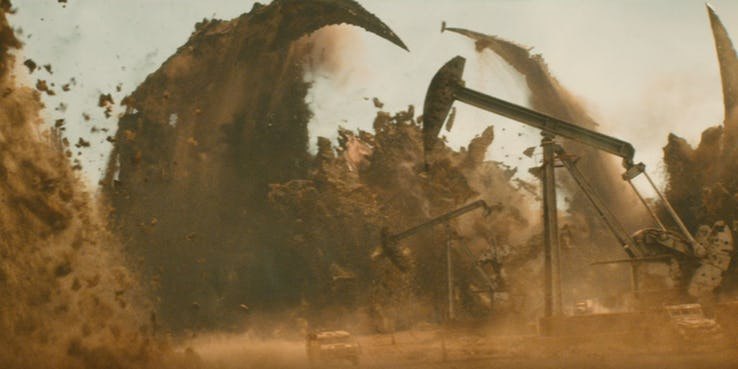
Several unknown Kaiju and monsters appear in ‘Godzilla II: King of the Monsters’ as well, awakened by Ghidorah and the ORCA’s signals to lay waste upon the planet, and “restore balance”. While no official confirmation has been received on any of them except Mothra, Rodan and Ghidorah whose licenses Legendary acquired from Toho to use in their film, several other Toho properties along with some completely newly designed monsters, most notable among them being a mammoth that was, well, literally a woolly mammoth wreaking havoc on cities through the sheer magnitude of his size, and an arachnid with a black underbelly, that could also possibly be Kumonga, save a few distinctive design differences.
Another notable presence were the spiked arms emerging from the oil field in this film, also shown in the trailer, and a shot of a beast with a “mountain back” if you know what I mean. My guesses range from Spiga to Kamacuras for the first beast, and Anguirus for the second terra beast. There is definitely more to come, since Gigan and Titanosaurus too have been acquired y Legendary. Whether they are utilised in ‘Godzilla vs. Kong’ or in this film’s direct sequel is still a mystery, considering how early it still is to predict.
Read More in Explainers: Bird Box | Gattaca | Brightburn

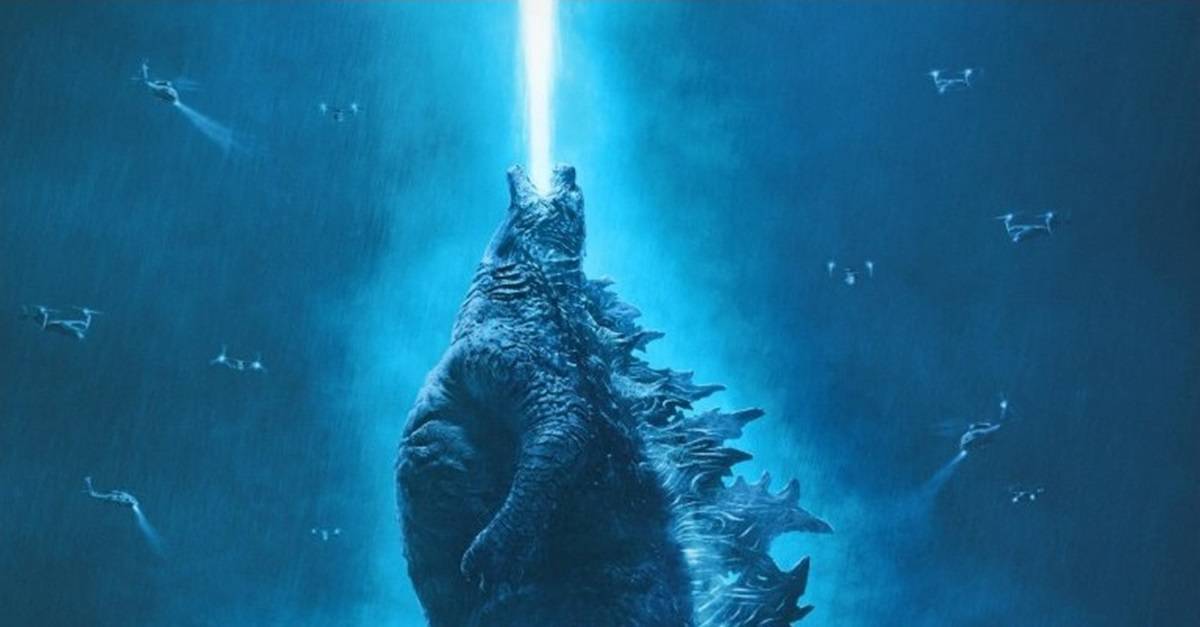
You must be logged in to post a comment.